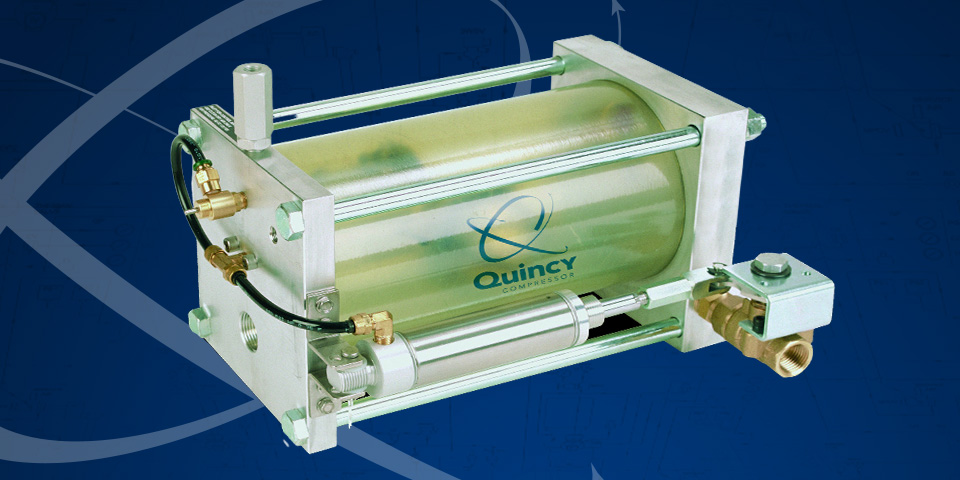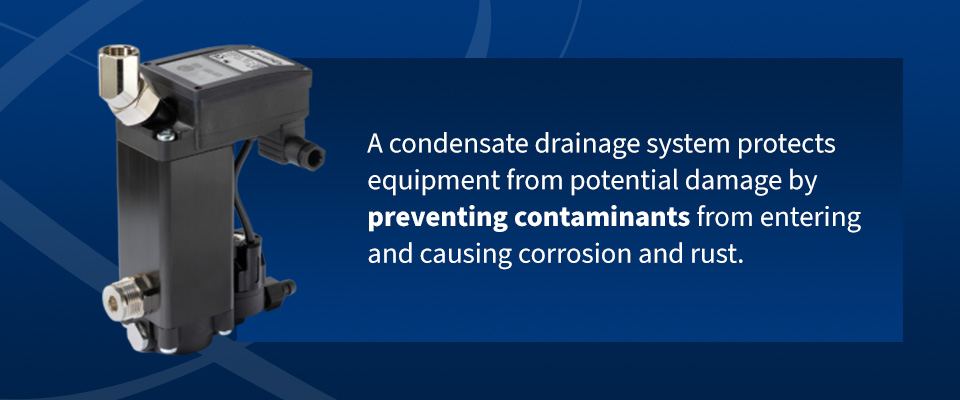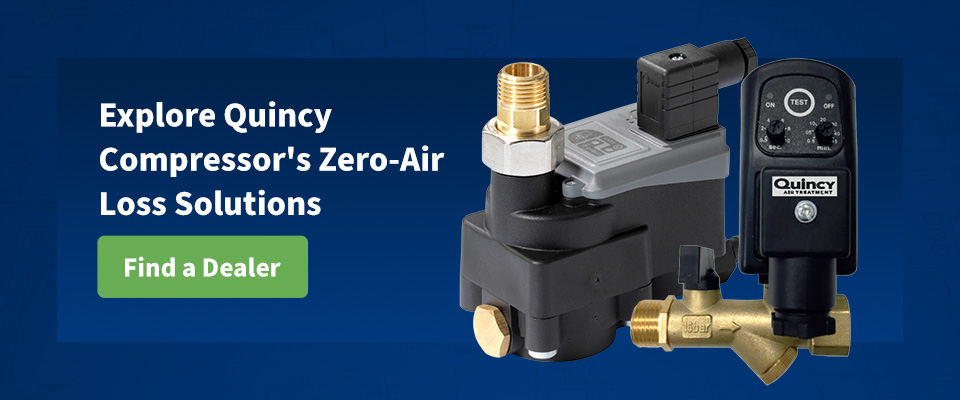
Air compressors are popular machines used in various industries. From crop sprayers in the agriculture industry to pneumatic tools in the mining industry, air compressors help complete critical industrial processes. However, to maintain its reliability and long-lasting operation, one component requires your attention — the condensate drain.
The compressed air condensate drain is a mechanism that removes accumulated moisture from the air compressor system. Condensation occurs due to temperature changes during the compression process. The accumulated condensation then takes up precious space at the bottom of the tank.
If you don’t routinely drain and maintain this device, it may damage equipment and reduce the air compressor’s efficiency. This scenario doesn’t play well in today’s fast-paced world.
This guide will cover all you need to know about zero-loss condensate drains — from how they work to practical efficiency tips — so your air compressor system can run efficiently and reduce downtime.
What Is a Zero-Air Loss Condensate Drain?
A zero-air loss condensate drain is an automatic drain valve that drains moisture from your compressed air system’s tank. Its sensor probe makes this type stand out from float-operated and timer-controlled valves.
The sensor monitors the amount of water accumulated inside the tank. Once the water reaches a predetermined level, the probe sends an electrical signal to a solenoid that triggers the drain to open — automatically draining the condensate. Once finished draining, it closes the drain to prevent any compressed air loss.
Though the draining method differs, the goal remains the same — removing condensate. Here’s a quick overview of how condensate drains work in general.
- Positioning: Condensation drains are at the bottom of compressed air systems — acting like an air compressor condensate trap. The strategic location is mainly due to the density difference between air and water — with water accumulating at the bottom and compressed air at the top.
- Detection: There are other detection mechanisms, like timers and floats. Each detection unit has a different way of monitoring the condensation levels.
- Activation: The detection units trigger the valve to open and close once condensation levels reach a predetermined level.
- Disposal: The collected condensation flows out of the condensate drain line.
How Do Zero-Air Loss Condensate Drains Make Your Air Compressor Efficient?
Understanding how these components work is the first step to appreciating why so many people rely on them. With zero-air loss condensate drains, additional advantages enhance air compressor efficiency.
Energy Efficiency
One of the most noteworthy features of having a zero-air loss drain is its energy efficiency. This drain automatically expels accumulated condensate. However, unlike other types, it releases little to no compressed air when draining.
This feature may help maintain consistent pressure levels without compensating for lost air, alleviating the compressor’s workload and reducing energy consumption and costs.
Operational Cost Reduction
The previous advantage can also minimize operational costs. Because zero-air loss condensate drains prevent unnecessary compressed air loss, it can also reduce the energy required to produce and maintain compressed air levels. The synergy of these two factors can prove highly effective for industries where compressed air is crucial.
Note that some air compressors are more prone to moisture, affecting your condensation management needs and operational expenses. These types include undersized or failing machines and those operating in humid environments.
Extended Equipment Life Span
A condensate drainage system protects equipment from potential damage by preventing contaminants from entering and causing corrosion and rust. A condensate drain can also prevent blockages in the various components.
Additionally, a zero-loss condensate drain’s automatic capabilities can extend the equipment’s life span. The reduced workload on the compressor and less need to keep adjusting the pressure due to air loss can translate to decreased component wear and tear. In essence, these drains act as protective measures in preserving your equipment.
Environmental Impact
As a result of energy efficiency and reduced operational needs, a zero-loss condensate drain can also positively impact the environment. Minimizing air wastage and maintaining effective condensation management can lead to more sustainable practices.
Consistent System Performance
A clogged condensate drain lineand an obstructed airflow may result in pressure drops and increased energy consumption to counter them. You can mitigate the impact of moisture in your system and reduce air loss by automatically draining the collected condensate and maintaining consistent pressure levels.
This consistent system performance may ensure optimal airflow, minimize pressure drops and, ultimately, preserve your air compressor efficiency. It can also lead to uninterrupted operations, which is crucial for industries that rely heavily on compressed air.
Product Quality
Some industries, such as manufacturing, pharmaceuticals, food processing, electronics and painting, demand high-quality air supply. Excessive moisture and contaminants may harm your downstream equipment and compromise the final product.
You must manage your condensation levels effectively to protect your downstream equipment for optimal product quality. Draining the collected moisture can ensure product quality and consistent standards.
7 Tips for Condensate Drain Management
Implement some of these practical tips to further harness your condensate drain’s efficiency.
- Regular inspections: Follow a schedule of routine condensation drain inspections to ensure they operate optimally. During these inspections, find and fix any leaks, blockages or signs of malfunctions.
- Scheduled maintenance: Prevention is better than cure. Ensure you plan and implement a regular cleaning and servicing schedule for your air compressor and its drainage system.
- Proper sizing: Various types and sizes of air compressors have different drainage systems. Ensure your drainage system’s size matches the compressor’s capacity and condensate volume.
- Weather considerations: The environment your air compressor is in dictates the amount of condensation. For example, there may be more condensation accumulation in humid climates, forcing you to adjust your drain maintenance frequency to prevent buildup.
- Drain traps: Install drain traps or separators to remove oil and other contaminants from your condensate before it reaches the drain. These traps may prevent potential issues downstream.
- Documentation and records: Document and maintain detailed records of your drain’s maintenance, inspections and any other issues you experience. These insights help you efficiently track performance and troubleshoot problems.
Explore Quincy Compressor’s Zero-Air Loss Solutions
Having read this guide, you should appreciate the need for effective condensate management. To help you, we at Quincy Compressor offer a range of zero-air loss condensate drains and condensate purifiers for maximum efficiency.
We focus on reliability, performance and unparalleled warranty support so we can cater to diverse industry needs. Locate your nearest dealer and explore our various air compressor products and services.



